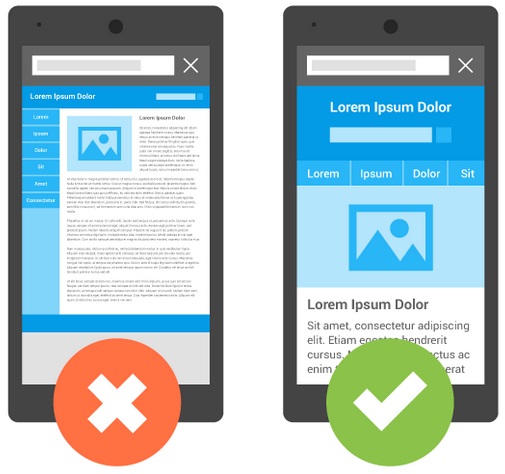In an era where mobile devices dominate web browsing, Google has placed increasing importance on mobile-friendly websites.
With the introduction of the Google Mobile-Friendly Algorithm, a significant shift occurred, impacting millions of websites.
This comprehensive exploration will delve into the evolution of the mobile-friendly algorithm, its core impact, and actionable strategies to optimize websites to recover from ranking losses and boost SEO performance.
The Genesis: Google’s Mobile-Friendly Algorithm
The mobile-first movement began with Google’s drive to enhance user experience on mobile devices.
Before this shift, desktop versions of websites were prioritized, but as mobile traffic soared, Google needed a new approach to ensure mobile users received the best possible experience.
Key Milestones in Google’s Mobile-Friendly Algorithm:
- April 21, 2015: The first significant update, often referred to as “Mobilegeddon,” was released.
- It marked the start of mobile-friendliness as an official ranking signal.
- Websites that weren’t optimized for mobile saw noticeable declines in search engine rankings.
- March 26, 2018: Google implemented mobile-first indexing, prioritizing the mobile version of websites for indexing and ranking.
- Websites had to ensure seamless functionality across mobile devices, or risk ranking penalties.
Why the Update Was Necessary:
The shift was driven by the rising trend of mobile internet usage.
In 2015, for the first time, mobile internet usage surpassed desktop.
Google’s algorithms needed to keep pace with changing user behavior, and thus, mobile-friendliness became a ranking priority.
Core Impact of the Google Mobile-Friendly Algorithm
The impact of the mobile-friendly algorithm is far-reaching.
It not only affects SEO rankings but also the overall user experience. Here’s how:
1 .Loss of Ranking for Non-Mobile-Friendly Websites:
Websites that failed to implement mobile-friendly designs saw dramatic ranking drops, particularly in mobile search results.
As mobile-first indexing took center stage, these websites struggled to compete with their optimized counterparts.
2 .User Experience and Engagement:
A mobile-friendly design isn’t just about fitting content onto smaller screens.
- Factors like font readability, ease of navigation, and loading times became critical.
- Websites that overlooked these elements experienced higher bounce rates, further impacting their SEO rankings.
3 .Longer Loading Times:
With the emphasis on mobile devices, Core Web Vitals—especially Largest Contentful Paint (LCP)—became essential metrics. Slow loading times lead to poor LCP scores, which directly affect a website’s ranking.
4 .Penalties for Poor Mobile Performance:
- Google’s algorithm penalized websites that were not mobile-responsive, affecting not only their ranking in mobile search results but in overall SERPs (Search Engine Results Pages).
- This was a massive wake-up call for businesses to prioritize mobile optimization.
You should know more on Google CORE Algorithm Updates
Read more Effective Marketing Strategies for Laundry Business Promotion.
Google Algorithm Updates for SEO Optimization Process
Google 2024 CORE Algorithm Update for SEO Optimization

Strategies and Methods to Optimize for the Mobile-Friendly Algorithm
To stay competitive, adapting to Google’s mobile-friendly guidelines is crucial.
Here are some actionable strategies to recover from penalties and enhance SEO performance:
1. Mobile-Friendly Design:
- Ensure responsive design: A responsive website automatically adjusts to the screen size, whether on desktop, tablet, or mobile.
- This eliminates the need for zooming or scrolling horizontally.
- Above-the-fold content: Prioritize displaying crucial content at the top, as mobile users are less likely to scroll down.
- Avoid intrusive interstitials (pop-ups) that disrupt the user experience on mobile devices.
2. Speed Optimization and Core Web Vitals:
Speed is a critical ranking factor, and Google’s Core Web Vitals—LCP (Largest Contentful Paint), FID (First Input Delay), and CLS (Cumulative Layout Shift)—play a crucial role.
- Improve LCP by optimizing images and enabling compression. A slow LCP score can negatively impact your website’s performance.
- Use lazy loading to ensure images load only when they’re visible, reducing loading times.
- Minimize JavaScript blocking to improve FID and allow quicker interactions for users.
- Prevent layout shifts by ensuring content loads predictably, improving your CLS score.
3. Focus on Mobile SEO:
- Optimize for mobile-specific keywords: Users searching via mobile often use shorter queries or voice search. Target relevant, concise keywords for mobile users.
- Improve local SEO: Since many mobile searches are local-based, ensuring your business is optimized for local SEO can lead to increased visibility and traffic.
4. Regular Mobile Usability Testing:
- Regularly check your website’s Mobile Usability Report in Google Search Console.
- This tool identifies issues such as clickable elements being too close together or content being wider than the screen.
- Conduct manual testing on various devices to see how your site performs.
- Automated tools can sometimes miss small design or UX (user experience) issues.
5. Accelerated Mobile Pages (AMP):
- AMP is a Google-backed project that aims to make web pages load faster on mobile devices.
- Implementing AMP can significantly reduce loading times and improve mobile performance.
- However, weigh the benefits, as it may strip down certain design features of your website.
What Happens When You Don’t Optimize: Loss of Ranking
Neglecting mobile optimization can have devastating effects on your SEO efforts. If your site is not mobile-friendly, you’ll face:
- Rankings decline: As Google gives priority to mobile-friendly sites, those that aren’t optimized see their rankings plummet, especially in mobile search results.
- Lower organic traffic: With the rise of mobile-first indexing, non-mobile-friendly sites are deprioritized, leading to a decrease in organic traffic.
- Higher bounce rates: A site that doesn’t load properly on mobile devices drives users away.
- If your site is difficult to navigate, has unreadable text, or loads slowly, users will leave, signaling to Google that your site provides a poor experience.

Key Takeaways: Staying Ahead of Google’s Mobile-Friendly Updates
The ever-evolving mobile-friendly algorithm requires constant vigilance and adaptation.
Here are some key takeaways to ensure your site remains optimized:
- Mobile-friendliness is no longer optional: It’s an essential part of SEO and user experience.
- Regular updates and testing are vital: Ensure your website adheres to the latest mobile guidelines, focusing on user experience, loading times, and responsiveness.
- Adapt your SEO strategies for mobile: Use mobile-specific keywords, focus on local SEO, and regularly review your Core Web Vitals.
- Mobile-first indexing is here to stay: Google’s mobile-first index will continue to prioritize mobile-optimized content, making it essential to stay compliant with these updates.
Is Your Laundry Business Disappearing from Google?
Every day, potential customers search for laundry services just like yours.
They turn to Google, expecting to find the best, the fastest, and the most reliable options available. But ask yourself… Where is your business?
Have you ever wondered why your laundry business isn’t showing up where it matters most? Why your website seems invisible while your competitors dominate the search results? It’s not just frustrating. It’s devastating.
Know more on:
Google BERT update Recovery Strategies
Google PANDA Algorithm Recovery Strategies and methods
Without the right SEO strategy, your business loses more than just visibility—it loses trust, customers, and profits. You might have built an incredible service, but what’s the use if no one can find you?
Let that sink in.
If your website isn’t optimized for Google’s latest algorithm updates, you’re not just falling behind. You’re losing every second:
- Losing customers who search for laundry services but never see your name.
- Losing revenue as other laundry providers scoop up the business meant for you.
- Losing credibility because a poorly ranked website screams “untrustworthy” to potential customers.
While your competitors are thriving with new clients, seamless online bookings, and constant phone calls, you’re left wondering why your phone isn’t ringing.
Your website might look fine, but behind the scenes, Google sees it as outdated, irrelevant, and unworthy of a top spot.
And that, my friend, is costing you everything.
Also Read more
Digital Marketing Agency for the Laundry Industry
How to Pick and Use Primary Keywords and Importance
How to Pick Secondary Keywords, Best Practices key benefits
Google BERT update Recovery Strategies
The truth is, without proper SEO, your business is invisible.
But this isn’t the end of the road. There’s a way out. A way to recover what you’ve lost and finally give your laundry business the exposure it deserves.
SEO mastery is the difference. And this is where Mr. Ram, with over 10+ years of expertise, can help you turn the tide. Imagine your website finally rising in Google’s rankings, attracting a flood of new customers, and becoming the trusted name in laundry services.
Mr. Ram is not just an SEO expert. He’s recovered businesses from Google penalties and optimized over 300 blog articles with proven strategies that work.
But this isn’t just about what you could gain—it’s about what you’re already losing by ignoring these critical updates.
Every minute you wait is another customer lost to the competition. You can’t afford that.
Take action NOW before your business slips further out of reach.
Reach out directly for help at at [email protected] or start a conversation on WhatsApp.
Stop watching your business fade into the background while others flourish. It’s time to bring your laundry service back into the spotlight.
Know more about Google BERT Algorithm Updates
Google 2024 CORE Algorithm Updates for Laundry Website SEO Optimization
Know more about Google BERT Algorithm Updates
Final Words:
the Google Mobile-Friendly Algorithm has reshaped the SEO landscape.
Prioritizing mobile optimization, speed improvements, and user experience is critical to ensuring your website stays competitive and avoids penalties.
Keep an eye on Google’s evolving algorithms, and stay ahead by consistently implementing the latest SEO strategies to enhance both rankings and user engagement.
By following these guidelines, you can safeguard your website from ranking losses, boost mobile performance, and provide a seamless experience for your users—whether they’re browsing from a desktop or a smartphone
Promote Your Laundry Business Online with Proven Online Marketing Strategies!
Unlock the Secrets of Google Ranking Optimization Strategies , Fast-Track Your Laundry Business Success with Mastermind Mr. Ram
Related Articles
Which AI Tools Are Used by Top SEO Agencies in the AI Transformation Era?
AI isn’t just disrupting SEO — it’s rebuilding it from the ground up. The world’s top SEO agencies are no longer relying on manual spreadsheets or...
Hire LLM Optimized SEO Service & Rank Faster | Get Yours
Every single day you postpone, your competitors are capturing market share in a new arena: AI Answer Engines. The digital landscape has fundamentally...
LLM Retrievable Content Creation Services: Future-Proof Your SEO with AI Agent-Ready Content
As search evolves beyond simple keyword matching, traditional SEO strategies are becoming obsolete. LLM retrievable content creation services are...
AI Powered SEO Services: Transform Your Digital Visibility and Rank Smarter
In today's fast-paced digital landscape, businesses struggle with traditional SEO methods that often fall short in efficiency and...
AI Powered Marketing for Laundry, Dry cleaners Services Business with Smart AI Automation
Why Read This? AI Marketing Is Changing Laundry Businesses Are you a laundry or dry cleaning business owner looking to grow faster in today’s AI era?...
AI-Driven SEO Services: A Game Changer for Laundry & Dry Cleaning Businesses
AI-Driven SEO Services: How Laundry & Dry Cleaning Businesses Win Online Imagine a customer urgently needing their clothes cleaned. They pull out...

